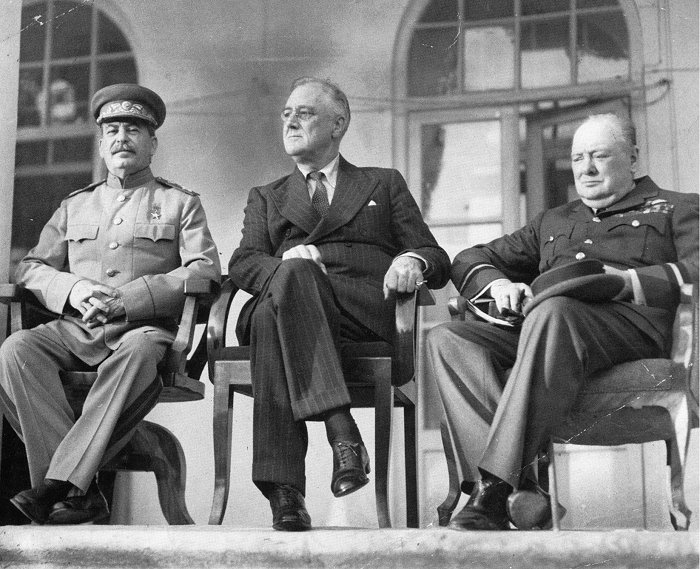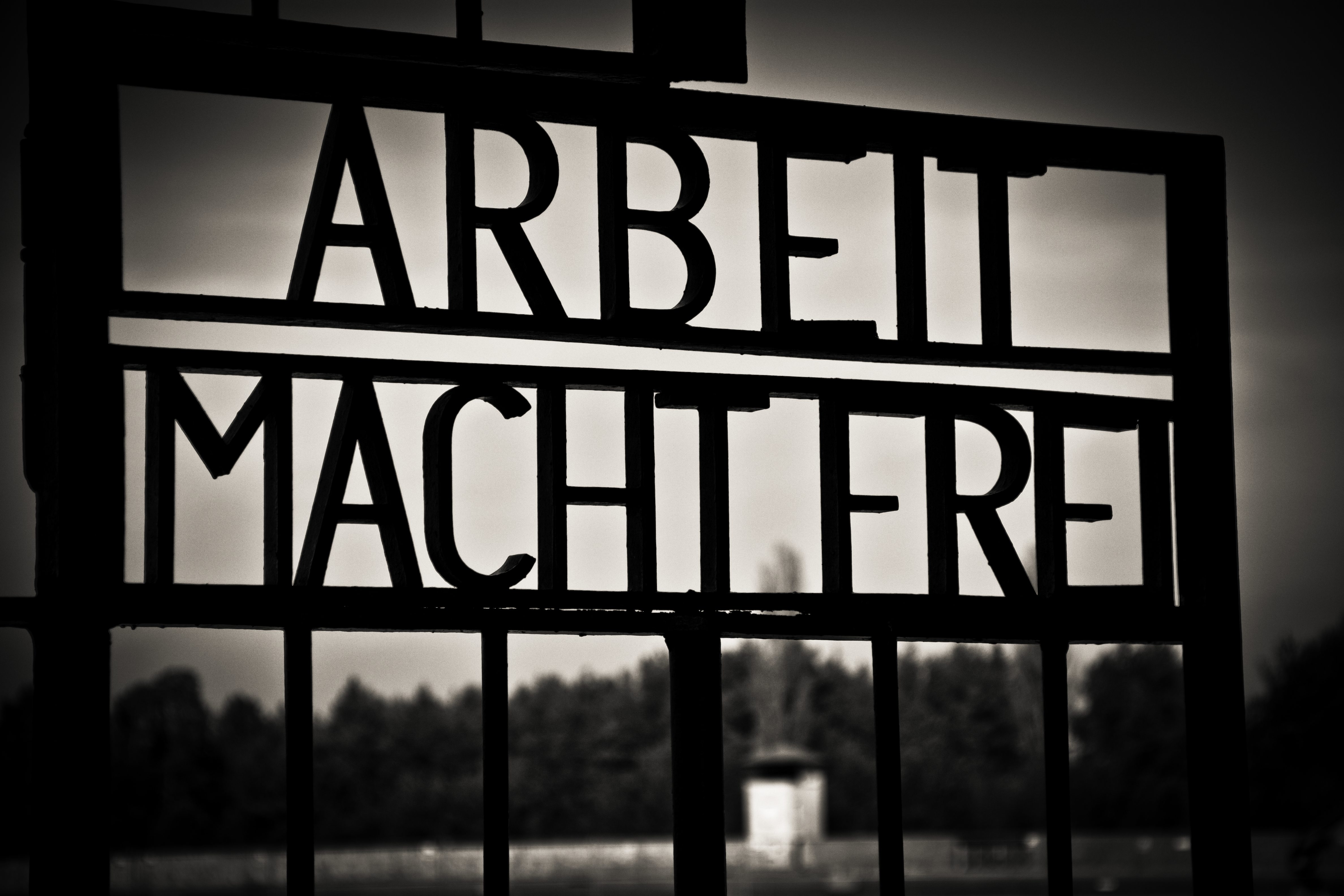America and World War II

Allied and Axis Powers: A Two Front War
Students will be able to identify and locate Allied and Axis powers on a map. Discuss key strategic decisions and turning points during the war, and war conferences and resolutions. And students will identify theaters of conflict and show an understanding of the importance geographic factors had on the war.
Formative Assessment: All class discussions based on questions posed in the lecture as well as completed guided notes.
Summative Assessment: Written responses to both the questions posed in the lesson and the essential historical questions at the begging of the lesson.
The teacher will deliver a lecture presentation on the Allied and Axis powers of World War II, important decisions and events, war conferences and their outcomes, and geography of the major theaters of the war effort. Throughout the lesson the teacher will show maps highlighting the different areas discussed, pictures of the nation powers, along with discussion of key vocabulary and critical thinking questions.
Throughout the lesson, students will be participating by following along with the lecture and completing a set of guided notes that have blank spaces for them to fill in as the lesson proceeds.

Appeasement, Isolationism, and The Great Depression
Students will understand the role of appeasement and isolationism during World War II as well as domestic distractions occurring prior to the outbreak of the war.
Formative Assessment: Students completed graphic organizers will be checked for understanding of concepts, completed terms and ideas, and any important additional notes and questions that may not have been asked during discussion that need clarification.
Summative Assessment: The students will complete an exit slip at the end relating to the driving historical questions posed at the beginning of the lesson. Students will be required to answer in complete sentences with a minimum of four sentences per question.
The teacher will begin the lesson by engaging the students in pre-reading of the two chapter sections. As a group review the main ideas, headings, subheadings, bolded words, images, charts & graphs, and critical thinking questions. Following this step the teacher will explain and model how to properly fill in the graphic organizer.
Students will complete a graphic organizer while the class reads the two sections. The graphic organizer is broken up into three separate columns. The first column relates to the important vocabulary terms and events that we are concentrating on for the lesson. The second column is for the summary of these terms or events using questions such as, “who, what, when, where, why, and how”. The last column is for additional notes that students may have on any of the content that can be reviewed as a class during later discussion.

The Final Solution and the Holocaust
Students analyze and understand the significance of the Nazi racial purity policy and the effects of the Final Solution and the Holocaust through the analysis of primary and secondary source documents.
Formative Assessment: Include student discussions throughout the lesson, specifically during groups and final class discussion of the primary sources.
Summative Assessment: For this lesson students will detach the final page of their primary source analysis packet to be collected and reviewed by the teacher in order to determine if the lesson objective has been met.
The teacher will first project a primary source image on the board to help model to the class how to analyze a primary source and what questions they should ask of the source. The teacher will make notes on the board of each of the areas to show how to properly complete their notes in the primary source packet being given to them. Once the teacher has finished modeling the concept of primary source analysis, students will be broken up into groups of 4-5 students to analyze a set of three primary sources including images as well as written documents. Students will be able to converse with their group in order to identify answers to each of the key questions as well as to answer the driving historical questions.
Students will be grouped together in groups of 4-5 students each in order to analyze and evaluate each of the three primary sources. Each group has the same three sources and will be given twenty minutes to analyze the sources and take notes on what they find as well as linking each of the sources to and providing answers for the driving historical questions provided at the beginning of the lesson. While students are working in their groups, I will be walking around observing student note taking and group discussions.

Political, Diplomatic, and Military leaders of World War II
Students will understand the decision making process of the leaders of World War II and the outcomes of their decisions.
Formative Assessment: The teacher will be walking around the room during the entire simulation answering questions as they arise and gauging student participation.
Summative Assessment: Student participation during the simulation will be factored in for a grade and students will be graded on their journal entries documenting their thoughts, feelings, and reactions to decisions and results made during the simulation. Students will also be asked to write about how their thoughts or feelings have changed about course of the war and how their opinions have or have not changed about the leader that they represented during the simulation.
Throughout the simulation the teacher will be proposing key wartime events and situations for the students to make critical group decisions on. Students will be instructed to keep a journal throughout the simulation documenting their thoughts, feelings, and reactions to the decisions and results made during the simulation. They will also be informed that they must write 1-2 paragraphs following the lesson activity on the last day of the simulation to answer the driving historical questions.
Students will be broken up into pre-arranged groups of 3-4 students representing a key leader of the war effort. In order to participate in the simulation they must strategize, think critically, and act in a team effort in order to make decisions based on the leader they are playing. The teacher will propose important events that occurred during the war and the student groupings will have to make decisions on how to react. The teacher will also provide additional information during the course of the simulation that may influence student decisions such as information on available resources, soldiers, etc. Students will also be instructed that they will be completing a journal along with the simulation. After important events are proposed and following decisions, students will be required to document their thoughts, feelings, and reactions to the decisions and results made during the simulation.

The Human Cost of War
Students will participate in a class discussion about the human cost of World War II paying close attention to the civilian and military loses of Russia, Germany, Great Britain, the United States, China, and Japan.
Formative Assessment: Students will be evaluated on their participating and respectfulness during the classroom discussion.
Summative Assessment: Written response following class discussion.
The teacher will go over rules and proper class discussion etiquette for students to follow during the discussion. Once everyone has read the rules and etiquette, the teacher will answer any questions and begin by posing the first discussion question. The teacher will moderate the discussion by keeping students on topic, making transitions to new questions when appropriate, keeping the discussion moving, ensuring all opinions are respected amongst students and that each student has an opportunity to share their opinion.
Students will be introduced to the topic of the human costs of World War II during the presentation at the beginning of the lesson and will participate in a whole class discussion following the presentation on the topic focusing on the devastating human cost resulting from the war as well as if the war itself outweighed these costs. After the class discussion, students will be required to write a three-paragraph response. The teacher will propose different discussion questions throughout the activity and students will share their thoughts and opinions while respecting other students’ opinions on the same topic and will give one another ample time to share their thoughts.
